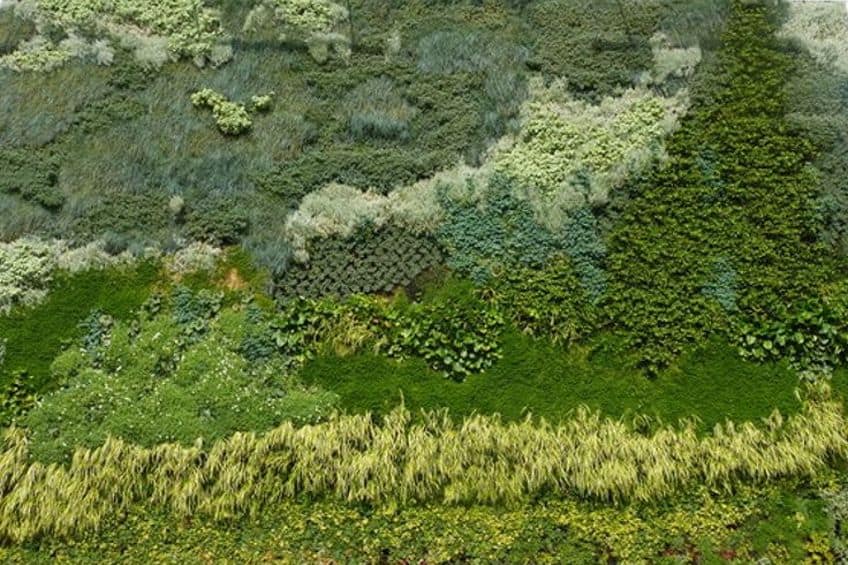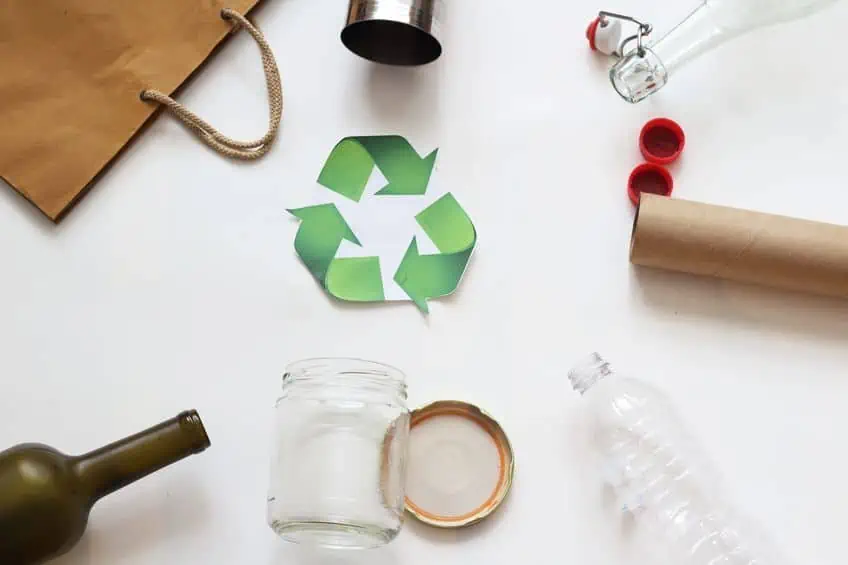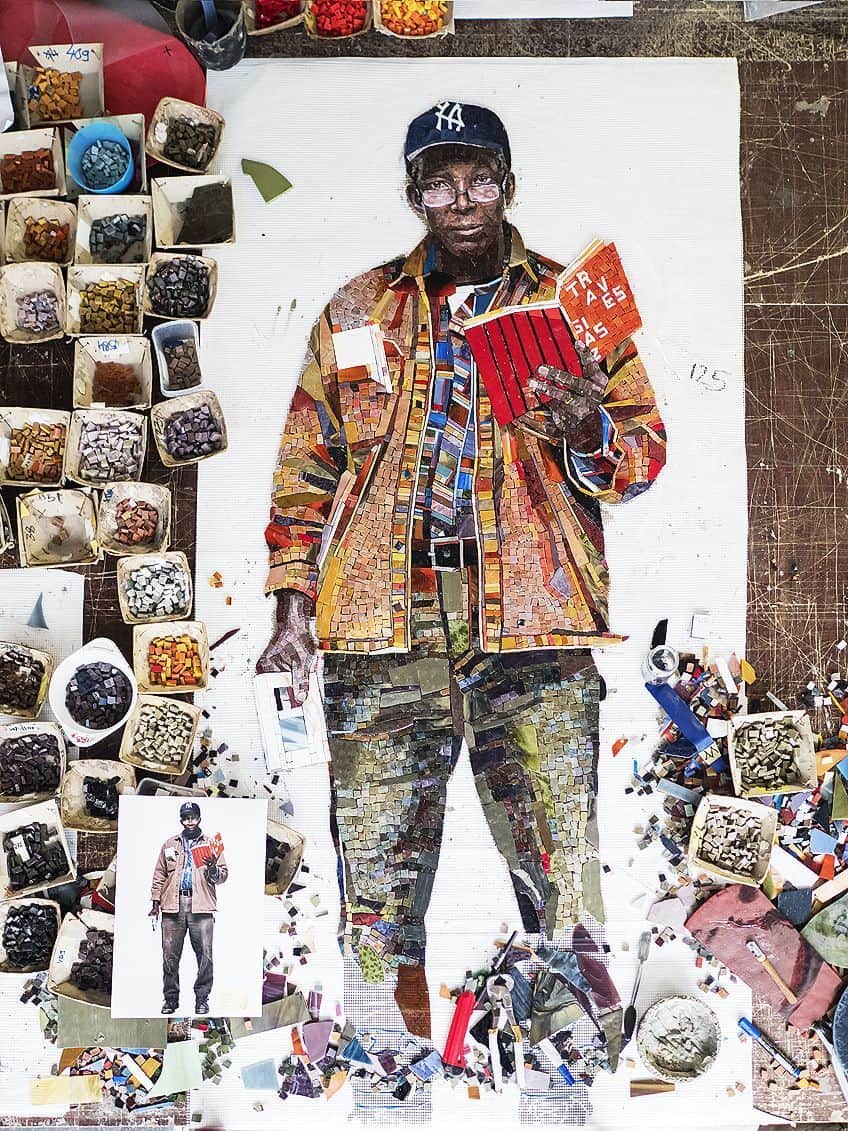Sustainability in Art – The Eco-Friendly Future of Art
What does sustainability mean and how does it relate to sustainability in art? We live in a throw-away culture that wraps everything in plastic and throws away anything without trying to fix it first. Sustainability, and art sustainability, in particular, would refer to using methods and materials that do less harm and damage to the earth. Sustainable art can also refer to art that depicts a visual message about sustainability.
Sustainability in Art
Paintings, sculpture, architecture, and other kinds of art has followed suit as our culture has taken on more social duties and responsibilities through action. Sustainability artists that want to contribute to the current discourse about sustainability are utilizing their sustainability art projects to communicate a statement, either through the concept or the medium utilized to make the sustainable artwork. The United Nations formed the Brundtland Commission in 1983 to promote worldwide cooperation toward sustainable solutions that would be of benefit to both the environment and the economy.

The Brundtland Commission first started its work by attempting to define art sustainability, establishing the 1987 guidelines that have been used to integrate environmentally responsible decisions in a variety of sectors in the decades since. Sustainability artists adopted this idea to analyze their own environmental influence. The concept of sustainability in art has resulted in ground-breaking pieces that use novel mediums to convey compelling statements about global warming, governmental policy, and social inequality. Artists hope that through creating sustainable art projects, they may not only alter how their artworks are created but also encourage cultural and social change.
The Implementation of Art Sustainability
When it comes to sustainability in art, the phrase “sustainability” may refer to a variety of things, and popular sentiment on this economic and social movement has grown substantially in recent decades. While the Brundtland Commission was an essential first step toward a massive shift, rules and laws targeted at rewarding sustainable practices have continued to grow to reward and promote implementation in the years after that.
The United Nations formed the Agenda for Sustainable Development in 2015, and it includes 17 major goals spanning a range of areas to help the world become more eco-friendly, secure, and wealthy by 2030.
The 12th aim, based on ethical production and consumption, resonates the most with the art industry. This objective necessitates corporations employing environmentally sensitive methods in all aspects of their business as well as increasing the usage of natural resources in their items. Many mass-produced objects are undergoing a manufacturing redesign, pushing sustainability artists and designers to reconsider the design foundations in order to meet this new requirement. While regulations are changing at a higher level, the concept of sustainability is also influencing the regular lives and careers of individual artists. While sustainable art is not the most financially rewarding sector, it is intended to offer perspective on the world as it is now, propose possible solutions, and increase awareness for causes that creators are concerned about.
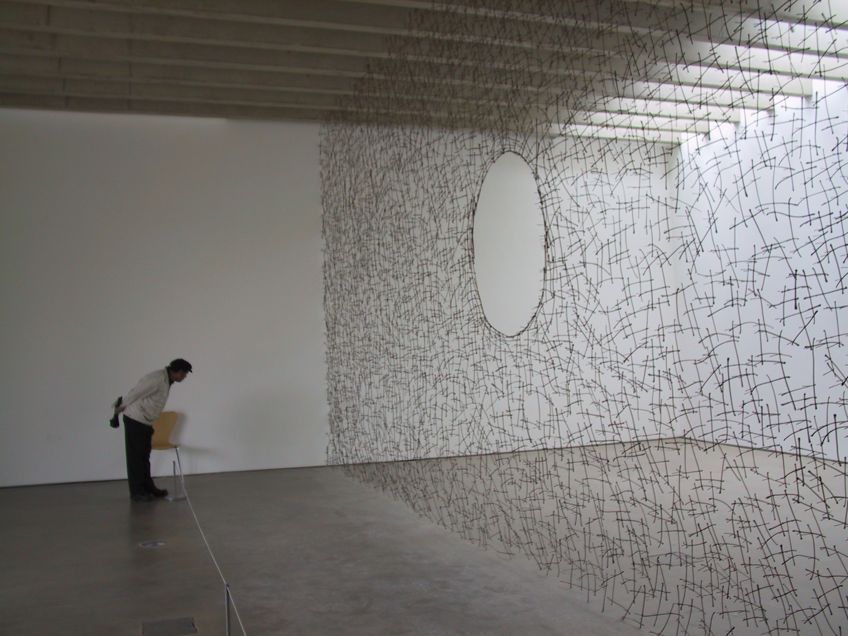
The Role of Sustainable Art in Inspiring Social Consciousness
While many artists are becoming more environmentally conscious, certain societies have been practicing these concepts for generations. Furoshiki, the technique of Japanese cloth folding, for instance, began in the Nara era as a means to safeguard jewels in transit, but it has lately gained popularity as a sustainable and elegant way to carry basics and wrap presents. Since the 15th century, Japan has also been at the forefront of the upcycling movement, or the transformation of damaged or discarded materials into something usable.
Kintsugi is the practice of restoring broken ceramics with gold, which promotes the minimization of waste and the acceptance of imperfections.
By appreciating used things, these art forms have contributed to altering public perception toward sustainability, and to establishing Japanese artwork as a leader in the field. Beyond the cultural movements, artists from all around the world have approached the concept of art sustainability in various ways. Some works, such as John Sabraw’s Toxic Sludge (c. 2010s) artworks, employ actual poisoned earth as their medium.
Others, like Paulo Grangeon’s 1,600 Pandas (2008), which placed paper-mache figurines in a prominent public location to challenge human influence on endangered animals, employ more conventional materials to call awareness to a specific topic. Olafur Eliasson’s work exemplifies how artists employ sustainable materials to highlight the dangers of climate change. In his 2014 piece named Ice Watch, the artist used enormous chunks of glacial ice as a reminder to act.
The Role of Institutions and Schools
Sustainable practices have also been incorporated into the curriculum of institutions and schools. Education systems are helping to shift the way we approach production, design, and consumption by educating students on the value of sustainable processes and how to produce things using ethically sourced materials. An industry tied to that of art and design is fashion design. Fast fashion, or low-cost clothes created quickly by mass-market merchants, is praised for its low prices and ever-changing trends.
However, until recently, customers were unaware of the underpaid labor and environmental problems produced by many famous labels.
Whereas many fast fashion brands are still in business today, several high-end brands are rethinking their operating tactics to adapt to environmentally concerned consumers and reduce their environmental imprint. They are making this transition by establishing recycling programs, being more transparent about their production methods, and employing more sustainable materials and fabrics in their goods. Aside from fashion, conventional art schools have included ecological techniques in their curriculum.
The Maryland Institute College of Art, for example, has developed a curriculum specifically for this concept, assisting students in engaging their creativity with the environmental and social issues confronting the world today, such as giving new life to old structures rather than demolishing them, or searching for ways to produce sustainable artworks out of what most would regard as trash. Nonprofit organizations such as The Center for Art Education and Sustainable teach institutions and pupils how to extend sustainability initiatives across the world.
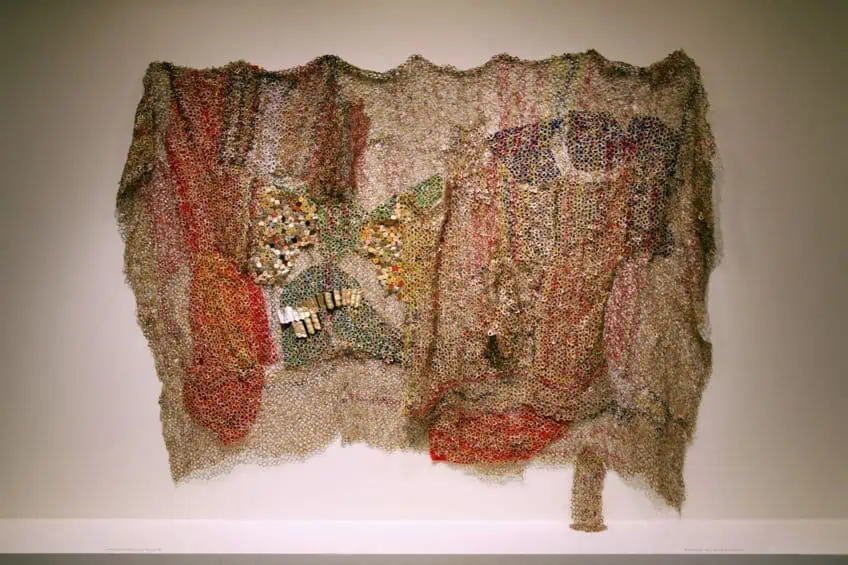
The Various Types of Sustainable Art
Based on the materials employed by the artist, and the goal or message of the artwork, sustainable art and design can take on several forms. Typically, discussions about sustainability in art begin with land art and conceptual art. However, imagining sustainability within an ethical art framework that connects nature, fashion, politics, and public engagement broadens the possibilities of mediums and formats that are encompassed within the art form.
Let’s look at the most notable examples.
Ecological Art
Because of its emphasis on preservation and engagement, ecological art differs somewhat from many other types of sustainable art. Although instances of ecological artwork stretch back to the 1960s, the phrase itself was coined in the 1990s. The ecological movement’s art seeks to remark on conscience, civic responsibility, or societal inequities. Unlike other pieces of art that only highlight a developing issue, this movement aims to change some part of it, regardless of how small. A guiding idea of ecological art is to improve on something already made in order to assist in altering a community in some way. For an example of this type of art in an urban context, the RCC Organization was able to revitalize a once-loved Chicago building, returning it to its former splendor to help uplift a neighborhood and give a new venue for local artists to congregate and create by converting the Civic Commons.

Land Art
Land art originated in the 1960s and 1970s as a byproduct of the conceptual art movement. It incorporates natural elements into the structure of the land to produce artwork that is frequently produced in isolated natural settings to showcase the strength and beauty of the environment. Photographs of these creations frequently shot at prominent places around Britain and the United States, were taken to galleries and shown to help publicize the movement. Robert Smithson’s Spiral Jetty is a well-known example of land art. Spiral Jetty, located in Utah, was built in 1970 out of salt crystals, mud, and rock.
The artwork is a remarkable example of an art movement that integrates with the earth and urges the viewer to contemplate the environment as part of the piece.
Upcycling Art
Upcycling, or the creation of art from previously discarded, unwanted, or damaged materials, is a type of sustainable art style that has grown in popularity in recent years. These upcycling sustainability artists employ materials that would otherwise end up in landfills to make their work, which would otherwise contribute to the world’s rising plastic crisis. Upcycling is also a driving factor behind fresh new business ideas, as it has proven useful to artists trying to create something unique, ecologically beneficial, and popular with customers. Romuald Hazoumè’s African Masks, created entirely of reused plastic gasoline containers, are a famous example of upcycling art. Hazoumè’s art was utilized to raise awareness and critique the political structures that promote a destructive cycle of consumerism. Hazoumè has stated of his art, “I return back to the West what belongs to them, that is to say, the garbage of consumer culture that invades us every day”.
Renewable Energy Sculpture
Renewable energy sculptures, a cross-categorical artistic medium, assist to offer renewable energy to regions in a unique and artistic way. This art trend creates sculptures that generate motion and energy by utilizing wind, solar, hydroelectric, geothermal, and tidal resources. This fusion of art and science is new to sustainable art, originating from the capacity to convert the resources of the earth into energy. The sustainability artists inform viewers of nature’s genuine beauty and strength by constructing a piece of art that can gather that energy. The globe has been captivated by artist Elena Paroucheva’s series of renewable energy artworks.
Her Wind Art is built to hold many wind turbines, integrating functional, aesthetic, and cultural aspects in her collection of works.
Conceptual Art
Conceptual art is based on an idea and the goal of the creator is given priority over the final product. Instead of creating something that one can possess, like a painting, sculpture, or photograph, the focus is on the piece’s significance. Site-specific, transitory works are among the fundamental elements of conceptual art. Many conceptual artists employ common objects and materials. Once this term is understood, it is simple to understand how conceptual artists who were involved in environmental art helped to establish the sustainable movement.

Closed-Loop Fashion Design
Closed-loop fashion is the concept of making clothes that may be altered, recycled, or regenerated to their original state at the end of their existence. Clothing companies may cut costs while introducing sustainable practices to the fashion business by establishing a closed loop within the production sector. Closure-loop manufacturing is the foundation of the business models of clothing companies like Marine Layer and For Days, which let customers participate in their recycling program by donating their old clothes.
Customers may even purchase recycled clothing directly from brands, with some even offering to later exchange the item for a cheaper alternative.
Contemporary Sustainability Artists
Sustainable art has grown in popularity in recent years as people become more aware of their effects on the environment and the future of our world. While sustainability necessitates a rethinking of how we consume, make, and produce art and things, it also allows designers and artists to reexamine their approaches. For the sake of the public and the environment, sustainable art combines design and science. Here are a few notable Sustainability artists currently making waves.
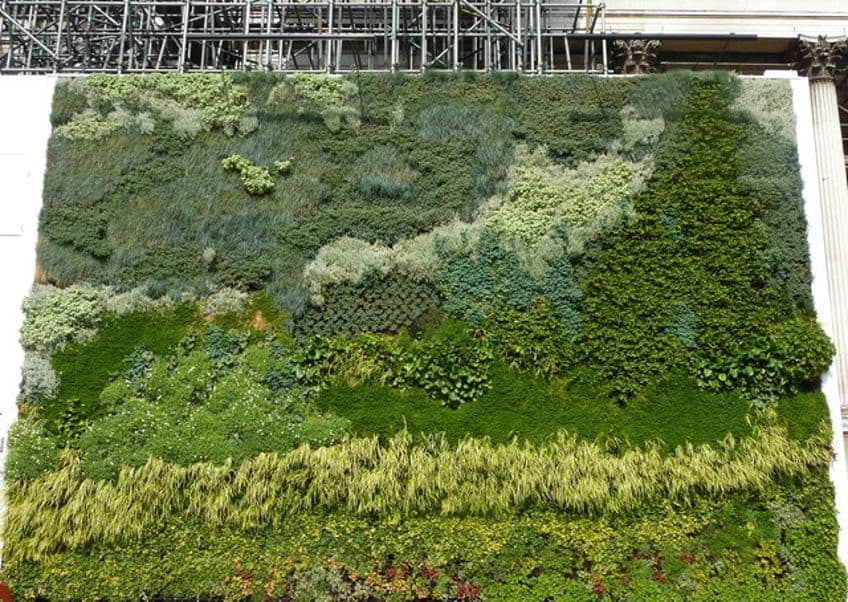
Chris Maynard (1954 – Present)
| Name | Chris Maynard |
| Year of Birth | 1954 |
| Place of Birth | Olympia, United States |
| Current Location | United States |
Chris Maynard’s early years were characterized by his love for birds. When he was younger, he sought safety in the nearby woods where, with his head buried in moss, he saw the birds perched high in the trees. At the age of 12, he started experimenting with feathers. Maynard now meticulously integrates feathers into works of art to highlight their inherent beauty. His artwork draws attention to the patterns and hues of the actual feathers, enticing the observer to keep looking. Feathers symbolize metamorphosis, flight, and a link between our real life and our aspirations in his opinion.
Shadow boxes, a distinctive art form he created that captivates people in Asia and all around the world, are used to showcase his work.
Choi Jeong Hwa (1961 – Present)
| Name | Choi Jeong Hwa |
| Year of Birth | 1961 |
| Place of Birth | Seoul, South Korea |
| Current Location | Seoul, South Korea |
Designer, and artist Choi Jeong Hwa’s work extends across into the fields of graphic design, visual art, industrial design, and architecture. His sources of inspiration include everyday life and popular culture. His choice of medium, which includes kitsch items, film, fake and real food, shopping carts, lights, and cables, reflects this. Choi is most known for his enormous inflatable sculptures, particularly lotus blooms, but his work is distinguished by an irreverent view of popular culture and the materials that surround us every day.
The trademarks of Choi’s whimsical repertory are large-scale outdoor sculptures made from a variety of materials such as consumer products, inflatables, and wires, as well as discarded and discovered artifacts.
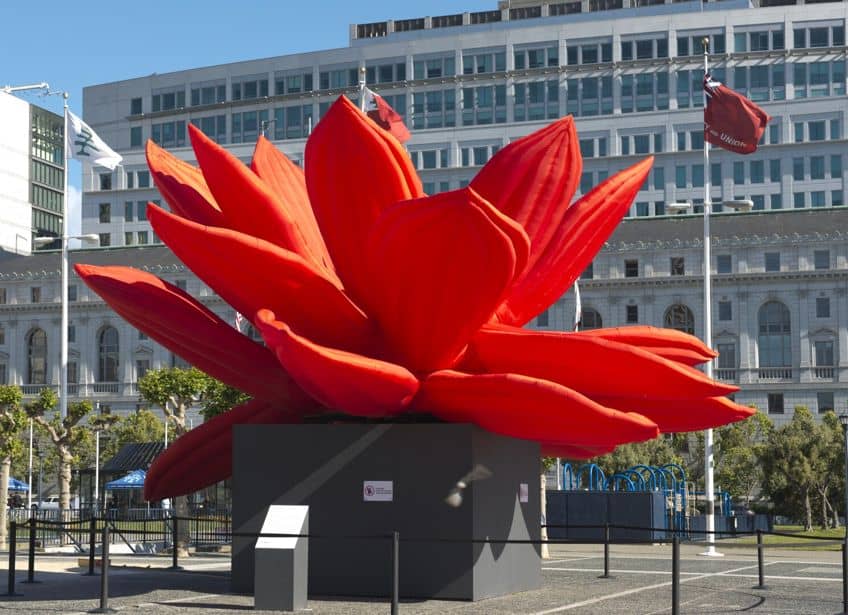
Pannaphan Yodmanee (1988 – Present)
| Name | Pannaphan Yodmanee |
| Year of Birth | 1988 |
| Place of Birth | Pattani, Thailand |
| Current Location | Thailand |
Pannaphan Yodmanee uses a variety of materials, including organic components and found artifacts, to produce artwork that is reminiscent of traditional Thai architecture and art. Minerals, rocks, and concrete ruins are painted over and rebuilt into lovely abstract shapes. By exploring topics such as Buddhist thought and cosmology, existence, loss, destruction, and death as well as the Karmic link of time as we are born and reincarnated, these works aim to make viewers consider the fluidity and flux of life. In her mixed-media paintings, she uses damaged murals to illustrate and portray sorrow, grief, faith, and the cycle of death and life. They also demonstrate the strength of faith, which encourages people to continue living their lives.
We are used to living in a world of increasing trash and pollution. Fortunately, the concept of living green is becoming increasingly popular, and the art world is no different. As more people become aware of global awareness and our collective responsibility to preserve the Earth, we are witnessing an increasing number of artists embrace this notion and work in the field of sustainability in art.
Frequently Asked Questions
What Does Sustainability Mean in Art?
There are a couple of ways that an artwork can be considered Sustainable art. Sustainability art projects that use repurposed materials are one of them. The other is using conventional materials, yet producing a work that has a specific message about sustainability.
What Is the Aim of Art Sustainability?
Mainly, it is to inspire, educate, and entertain the public at large. Hopefully, through the beauty of these works, the sustainability artists can impart the message they wish to convey to the world. Luckily, it is currently an idea that is catching on across many sectors of public and private life, from art to fashion, design, architecture, and many other facets of daily life.
Jordan Anthony is a Cape Town-based film photographer, curator, and arts writer. She holds a Bachelor of Art in Fine Arts from the University of the Witwatersrand, Johannesburg, where she explored themes like healing, identity, dreams, and intuitive creation in her Contemporary art practice. Jordan has collaborated with various local art institutions, including the KZNSA Gallery in Durban, the Turbine Art Fair, and the Wits Art Museum. Her photography focuses on abstract color manipulations, portraiture, candid shots, and urban landscapes. She’s intrigued by philosophy, memory, and esotericism, drawing inspiration from Surrealism, Fluxus, and ancient civilizations, as well as childhood influences and found objects. Jordan is working for artfilemagazine since 2022 and writes blog posts about art history and photography.
Learn more about Jordan Anthony and about us.
Cite this Article
Jordan, Anthony, “Sustainability in Art – The Eco-Friendly Future of Art.” artfilemagazine – Your Online Art Source. October 6, 2023. URL: https://artfilemagazine.com/sustainability-in-art/
Anthony, J. (2023, 6 October). Sustainability in Art – The Eco-Friendly Future of Art. artfilemagazine – Your Online Art Source. https://artfilemagazine.com/sustainability-in-art/
Anthony, Jordan. “Sustainability in Art – The Eco-Friendly Future of Art.” artfilemagazine – Your Online Art Source, October 6, 2023. https://artfilemagazine.com/sustainability-in-art/.


